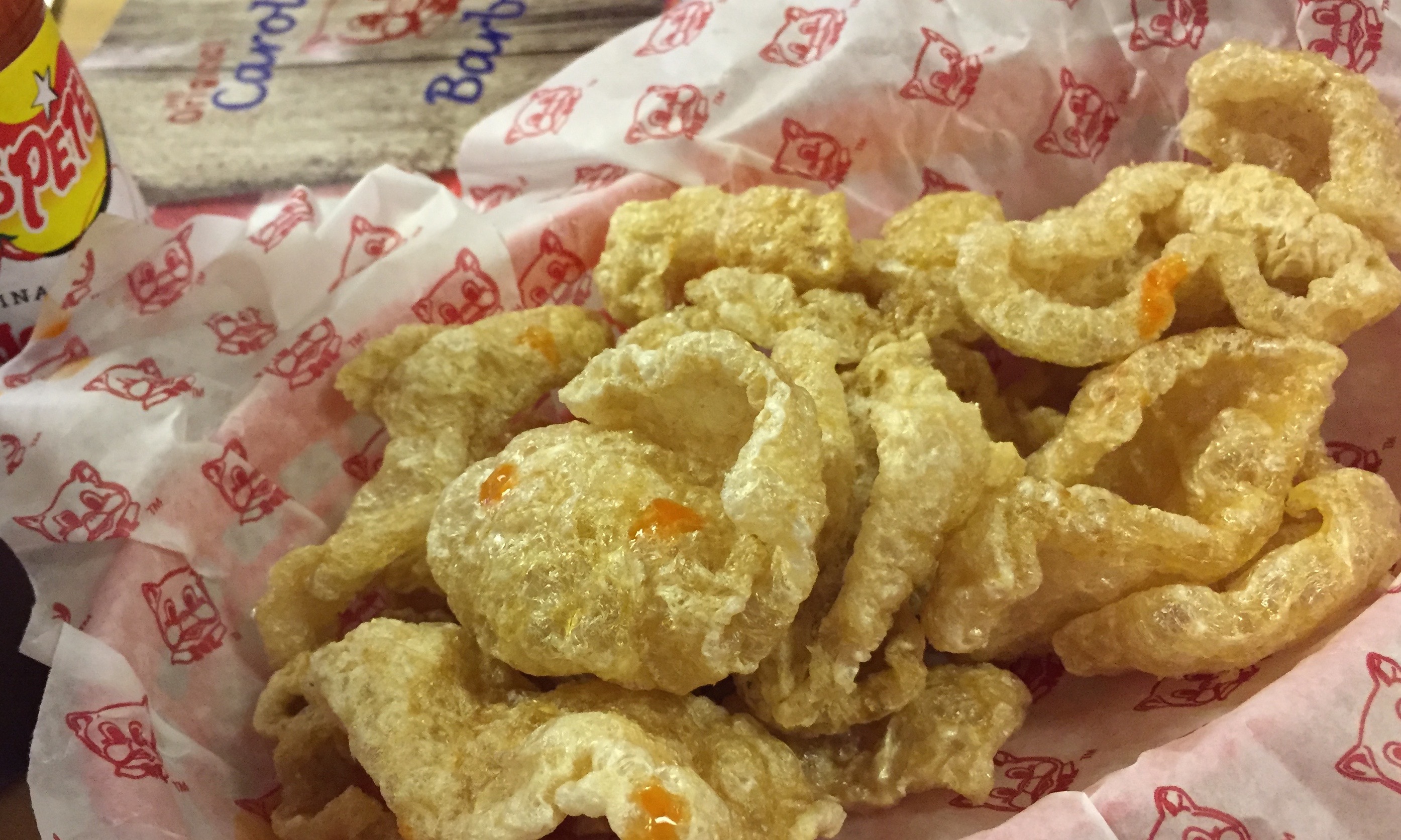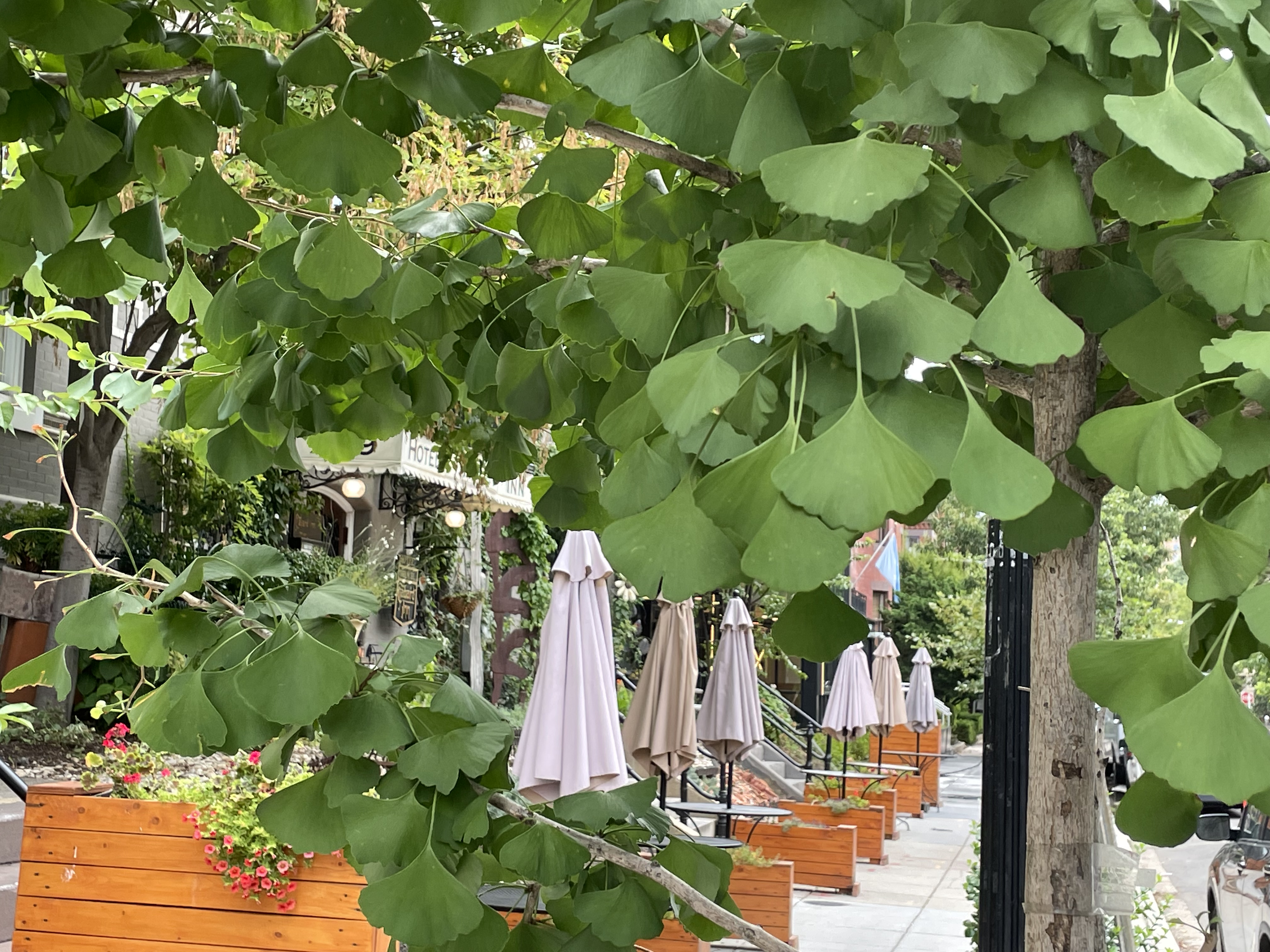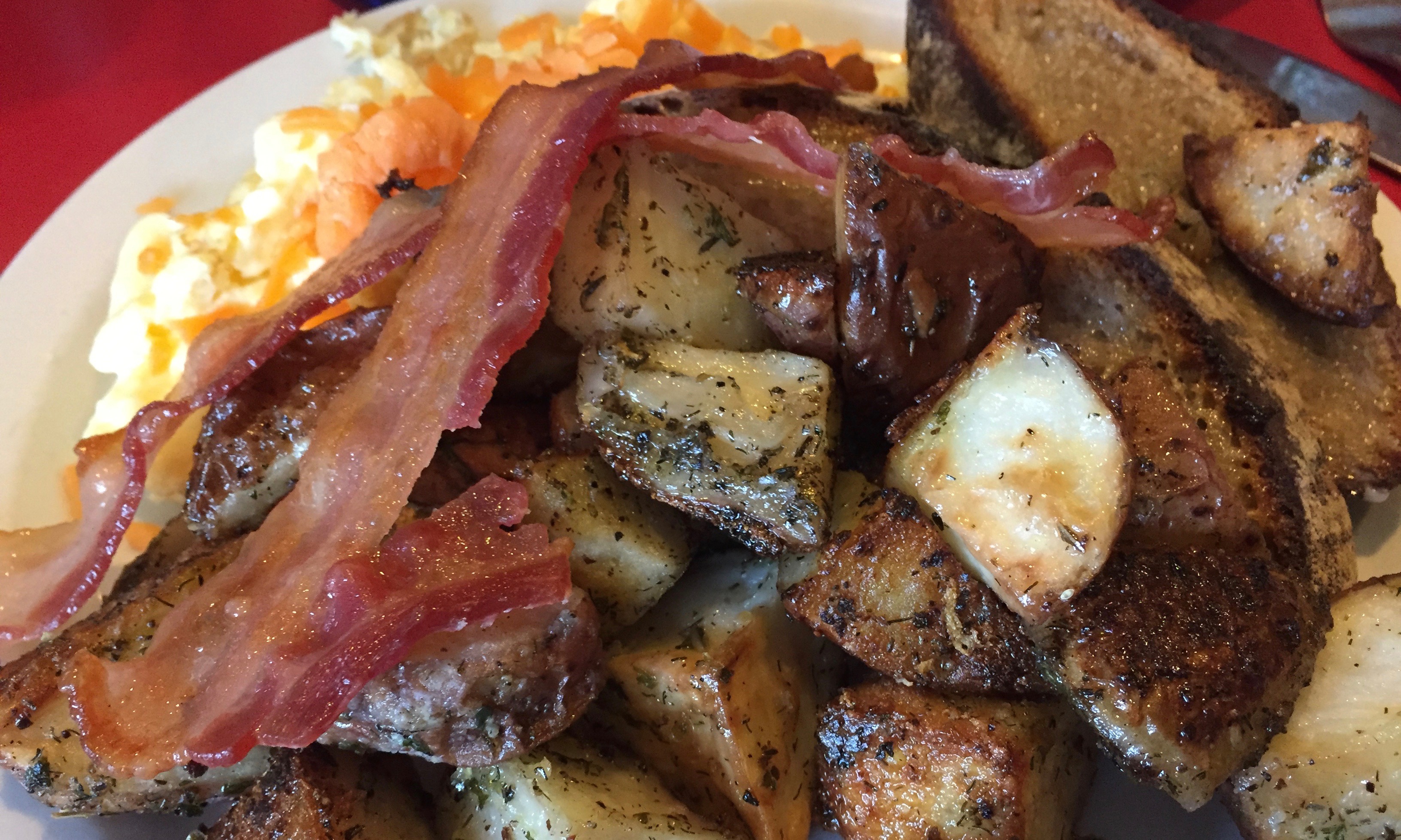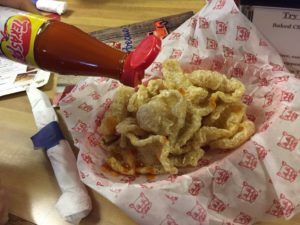
I know I’ve come to the right restaurant when instead of potato or tortilla chips, bread or peanuts, they bring out pork rinds for you to snack on! You even get to pick the sauce you can dip them in! Texas Pete, which isn’t from Texas.
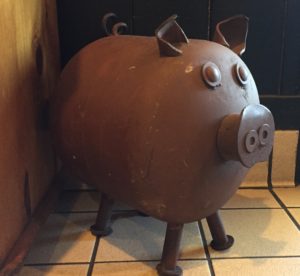
 This is the kind of treat one gets in pulled pork country. Barbecue country. Where the cutest images of pigs and hogs are displayed all over their restaurants. They are proud of their hogs here, you can tell. They make no apologies for eating pork fat; it is celebrated! My kind of abandon.
This is the kind of treat one gets in pulled pork country. Barbecue country. Where the cutest images of pigs and hogs are displayed all over their restaurants. They are proud of their hogs here, you can tell. They make no apologies for eating pork fat; it is celebrated! My kind of abandon.
I can identify with that enthusiasm. In my childhood I think pork was the most popular meat. We savored homemade pork crackling–except it wasn’t pork crackling American style. Ours was the delicious deep fried pork fat and skin left over from making lard, our staple for cooking oil. With all the oil rendered, the leftover fried fat is crispy outside and oozy with fat inside, depending on how long it’s been fried. These animal fat morsels are everything today’s nutritionists tell you to avoid (at least for now.)
Lard, the very thought of it would make some vegan shudder. But we loved it. My brothers debated on whether pork lard over rice tasted better with light soy sauce or dark soy sauce. (Light soy sauce!) Today, the leftover crackling–ju yau zha–is still served in Singapore food court stalls with my favorite noodles, Meepok, tossed noodles, or Char Kway Teow, fried rice noodles.
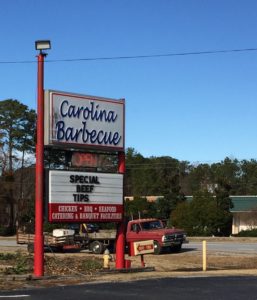 The yummy pork rinds pictured above reminded me of our pork fat. We had gone to the Carolina Barbecue restaurant for barbecue. There’s barbecue, we discovered, and there’s barbecue. In Raleigh, NC, where I was visiting my daughter Alison and her hubby Brian, barbecue means pulled pork.
The yummy pork rinds pictured above reminded me of our pork fat. We had gone to the Carolina Barbecue restaurant for barbecue. There’s barbecue, we discovered, and there’s barbecue. In Raleigh, NC, where I was visiting my daughter Alison and her hubby Brian, barbecue means pulled pork.
Coming from urban Singapore, a barbecue connotes for me old, warm, memories of beach parties, chicken coop wire over charcoal, chicken wings and hand-sliced pork marinated in soy sauce, ginger and garlic. Today my friends there fire up their Webers and grill ribeyes steaks, octopus and sting ray. In Australia, shrimp on the barbie is, well, barbecued shrimp. For most Americans, barbecue conjures a wonderful offer of gas- or charcoal-grilled meat and vegetables not limited to hamburgers, steaks or hot dogs but also zucchini, pepper, asparagus and corn.
I told Ted what North Carolinians call barbecue and he didn’t believe me. So while doing business at a bank in nearby Garner (home of Texas Pete?) he randomly asked the young woman attending to us: “When I say barbecue, what do you think I mean?”
She looked quizzically at him, paused and replied: “Mac and cheese? Collard greens?…Oh, barbecue! Definitely pulled pork!”
“Not barbecue, like steaks, hamburgers and hotdogs?” Ted asked.
She thought about it and corrected him: “You mean a cook out?”
Now…who in Singapore, or Sydney, or San Francisco would come up with collard greens as barbecue?
Here in North Carolina barbecue lovers agree. Barbecue is pulled pork. And if they want to elaborate its meaning a barbecue lunch like we ordered at the Carolina Barbecue (pictured below) would typically include fried chicken, fried chicken liver, fried ocra, hush puppies, pork or beef ribs, and yes…collard greens, coleslaw, and Brunswick stew. The restaurant also offered their own sauces, as well as the famous NC Texas Pete pepper sauce.
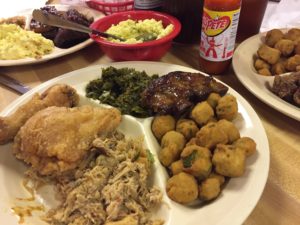
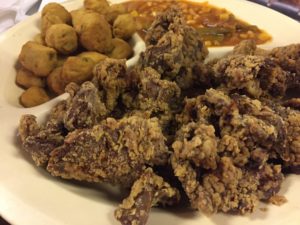
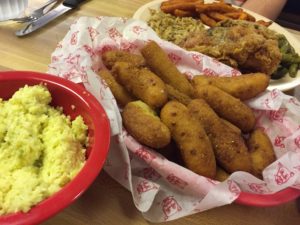
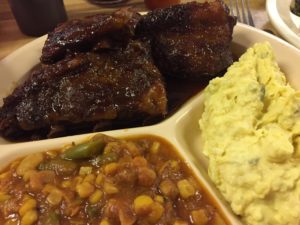
Barbecue comes from pork shoulder or whole hog. It is grilled–smoked or baked on low heat–for hours and hours until the meat is so tender it pulls easily into shreds. Hence pulled pork.
To add to my confusion, I also learned there was eastern style NC barbecue and western, Lexington style, NC barbecue. Something about the meat and marinade used. Eastern uses the whole hog, and western mostly shoulder. North Carolinians are very particular about the difference.
Brian, who favors the eastern-style, said the restaurant Carolina Barbecue was the best place furthest west with the most authentic eastern style barbecue. The city of Raleigh is just outside east NC.
And the difference in taste? Eastern is flavored with vinegar and spices. Our server said theirs had spices, vinegar, Worcestershire sauce, sugar and other ingredients. In contrast, western-style is sweeter, the pulled pork looks redder and do I dare say has a marinade that look like…er…barbecue sauce?
My search on the difference of the east west divide continues. Let me try more of that pork rind and fat and barbecue before I blog more on that.
